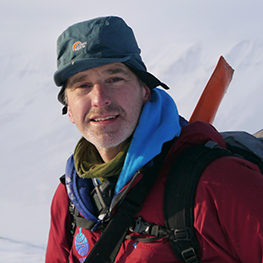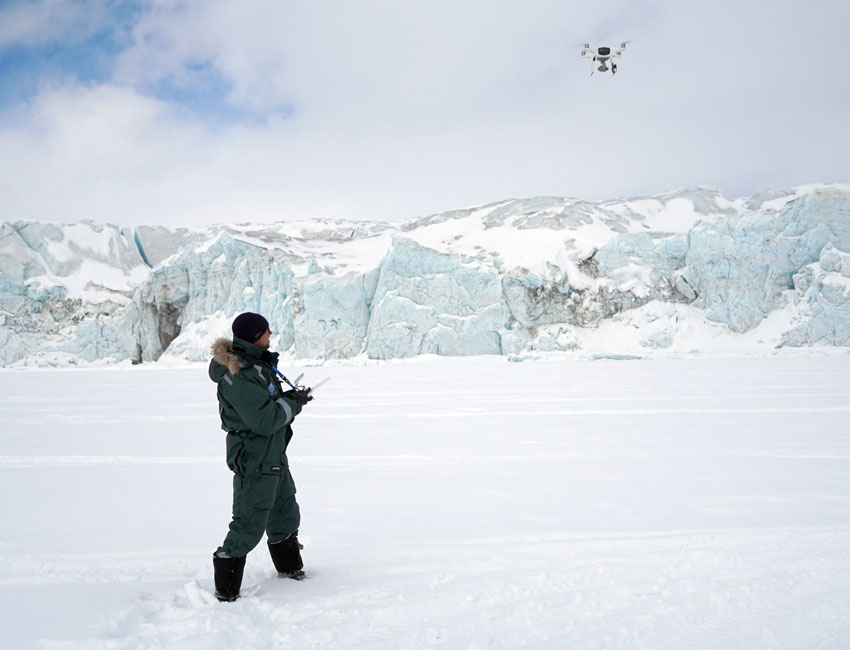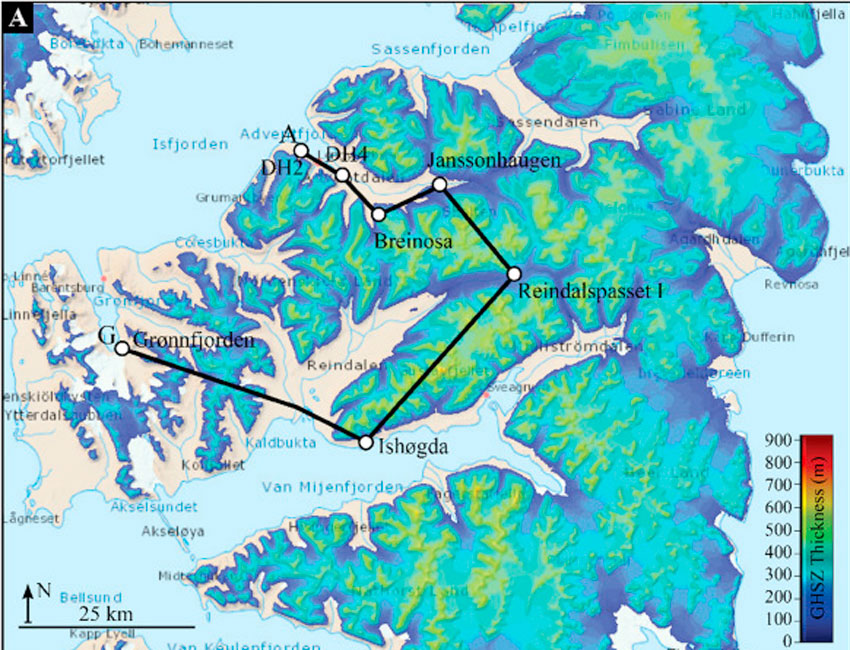
Andy’s research largely takes places in Svalbard and Antarctica, but he has also worked in Greenland and northern Sweden. His work considers the implications of ground thaw and ice melt for the release of water, sediment and nutrients into runoff. Particular attention is given to glacier hydrology and how the sensitive ecosystems found at the ice margin are influenced by meltwater dynamics. He also looks at the microbial ecosystems within the ice itself, since there are fewer habitats more vulnerable to the impacts of climate warming than ice and snow.
Publications at Google Scholar.
Current Projects
Blue Ice Oases of Microbial Life on the Antarctic Ice Sheet (BIOICE)
Funded by the Research Council for Norway and led by UNIS.
https://www.coldregionscience.com/bioice
Climatic forcing of terrestrial methane gas escape through permafrost in Svalbard (CLIMAGAS)
Funded by the Research Council of Norway and led by UNIS.
More info (PDF).
Recent Key Publications
Cook, J.M., Hodson, A.J., Gardner, A.S., Flanner, M., Tedstone, A., Williamson, C., Irvine-Fynn, T., Nilsson, J., Bryant, R. and Tranter, M., 2017. Quantifying bioalbedo: a new physically based model and discussions of empirical methods for characterising biological influence on ice and snow albedo. Cryosphere, 11(6), 2611-2632, doi: 10.5194/tc-11-2611-2017.
Hodson, A.J., Nowak, A., Holmlund, E., Redeker, K.R., Turchyn, A.V. and Christiansen, H.H., 2019. Seasonal dynamics of Methane and Carbon Dioxide evasion from an open system pingo: Lagoon Pingo, Svalbard. Frontiers in Earth Science, 7, 30, doi: 10.3389/feart.2019.00030.
Hodson, A.J., Nowak, A., Sabacka, M., Jungblut, A., Navarro, F., Pearce, D.A., Ávila-Jiménez, M., Convey, P., Vieira, G. 2017. Climatically-sensitive transfer of iron to maritime Antarctic ecosystems by surface runoff, Nature Communications 8, 14499. doi: 10.1038/ncomms14499
Hodson, A.J., Nowak, A., Sabacka, M., Cook, J., Wharfe, E.S., Pearce, D.A., Convey, P. and Vieira, G. 2017. Microbial ecosystems influence the biogeochemical and optical properties of maritime Antarctic snow. JGR Biogeosciences 122, doi: 10.1002/2016JG003694
Nowak, A., Hodson, A. and Turchyn, A.V., 2018. Spatial and Temporal Dynamics of Dissolved Organic Carbon, Chlorophyll, Nutrients, and Trace Metals in Maritime Antarctic Snow and Snowmelt. Frontiers in Earth Science, 6, 201, doi: 10.3389/feart.2018.00201.


